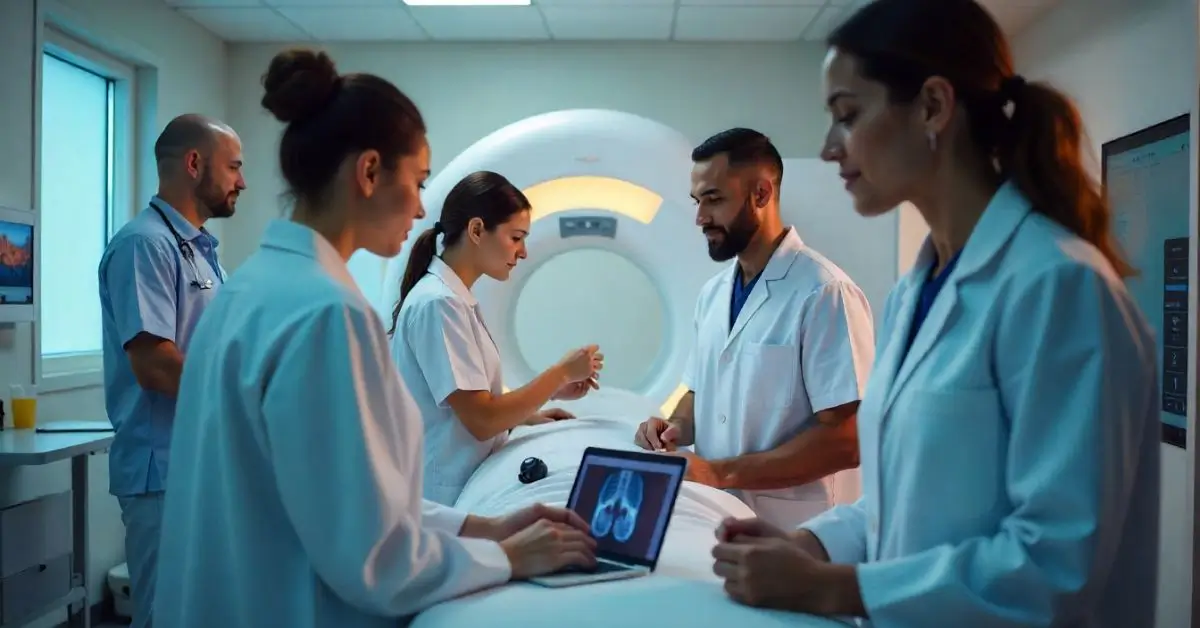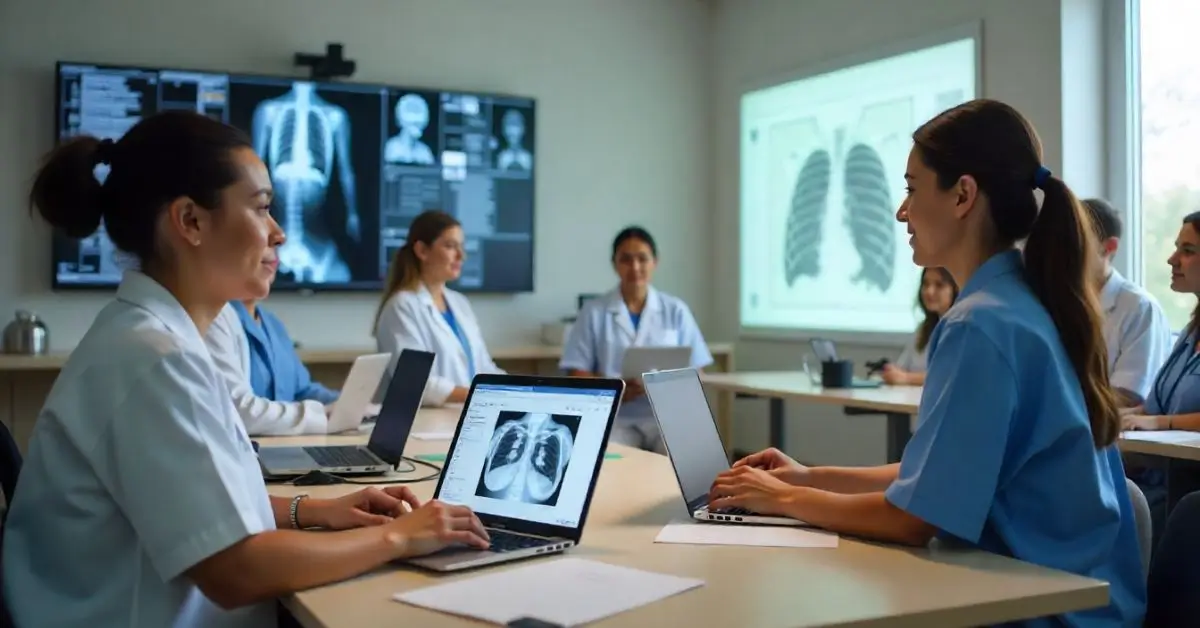TECHNOLOGY
Top Tech Solutions That Make Free Time More Enjoyable

For many, free time is a precious commodity, a moment to decompress and escape the daily grind. With the rapid evolution of technology, individuals have access to numerous tools and platforms that enhance leisure activities.
Whether it’s gaming, streaming, or virtual travel experiences, the possibilities seem endless. This article explores some of the most engaging tech solutions designed to enrich your downtime, taking your leisure time to new heights.
Gaming Platforms: The New Social Experience
The gaming industry has transitioned from a niche hobby to a universal pastime. With an expansive array of platforms available, gamers can connect with friends and strangers alike in immersive virtual worlds. Console gaming has seen a significant surge, with the latest releases appealing to hardcore gamers and to casual players. Mobile gaming continues to rise as smartphones have become more powerful.
Games designed for mobile devices cater to a diverse audience, offering quick entertainment suitable for shorter breaks during the day. For those looking to take social gaming further, tabletop simulators allow for traditionally physical games to seamlessly translate to digital formats. Using a ludo dice roller or a random spinner wheel can add excitement to these games by infusing elements of chance and unpredictability. These tools amplify interaction, fostering connections that transcend location boundaries.
Live voice chat and real-time messaging further enhance the social aspect, making communication as dynamic as the gameplay. Platforms like Discord have become important for organizing group sessions and maintaining in-game camaraderie. Leaderboards and achievements encourage friendly competition, motivating players to engage regularly. Many games now feature seasonal events and community challenges that bring users together toward common goals.
Streaming Services: Tailored Entertainment
Streaming platforms have reshaped how audiences consume content. Services like Netflix, Hulu, and Disney+ offer vast libraries of movies, series, and documentaries to suit diverse tastes and age groups. Personalized recommendations based on viewing history ensure that individuals continually discover new favorites. This accessibility caters to changing viewer behaviors, allowing for binge-watching sessions or casual viewing depending on the mood.
Live streaming has emerged as an entertaining way for creators to engage with audiences in real-time. Platforms like Twitch enable gamers, musicians, and artists to share their work and interact with fans directly, creating an interactive experience. This brings audiences closer to their interests and supports a growing community of content creators.
Virtual Reality: Escaping the Ordinary
The advent of virtual reality (VR) technology opens up exciting avenues for exploration and adventure. From immersive games to virtual tours of museums, VR offers experiences that transport users to entirely different environments. As this technology continues to advance, the realism and interactivity levels improve, enticing more users to explore its offerings.
Beyond gaming, VR serves educational purposes. Virtual classrooms allow students to experience historical events or scientific concepts in engaging ways, enhancing learning retention. With VR, free time transforms into a period of discovery and creativity, reshaping leisure into a dynamic experience.
Smart Home Devices: Comfort and Fun
Smart home technology enhances the quality of life by automating everyday tasks and amplifying relaxation and entertainment. Voice-activated assistants like Amazon Echo and Google Home streamline activities such as playing music, setting reminders, or controlling lights and appliances, making home management more enjoyable.
Routines can be customized, allowing individuals to craft the perfect atmosphere for their relaxation time. Smart TVs offer seamless access to streaming services and online content. Users can engage with various platforms directly through their television, simplifying the viewing experience. Integration of social media into these devices fosters shared experiences, allowing friends and family to connect over shared interests.
Mobile Apps: Enhance Leisure Activities
Numerous mobile applications enhance free-time activities and introduce individuals to new hobbies. Interactive fitness apps motivate users to stay fit while making workouts feel less like a chore. Users can compete with friends, track progress, and access a wide variety of routines suitable for all skill levels.
These elements promote physical activity in an enjoyable and accessible manner. In addition, hobby-focused apps, such as those for photography or crafts, bring creativity to the forefront. Guides, online communities, and tutorials establish a pathway for users to learn new skills, share their creations, and inspire others.
Choices abound, allowing users to pick activities or interests that resonate with them. Artistic pursuits can flourish through platforms dedicated to creative expression, such as digital art applications. These tools encourage experimentation, allowing users to create without the constraints traditionally found in physical media. The integration of technology into our free time shows just how much potential exists to make experiences enjoyable and fulfilling.
By incorporating platforms that foster interaction, creativity, and exploration, people may find more joy in their leisure activities. In a world where technology becomes an intrinsic part of our lives, the tools available to enhance free time are expansive. The key is finding the right solutions that resonate with personal interests, turning moments of relaxation into meaningful experiences.
TECHNOLOGY
Rad Tech Degree Online: A Flexible Path to a Rewarding Career

Pursuing a rad tech degree online offers a convenient and flexible way to enter the high-demand field of radiologic technology. As healthcare continues to evolve, the need for skilled radiologic technologists grows, making this career path both stable and rewarding. Whether you’re a working professional seeking advancement or a student looking for an accessible education, an online rad tech program can provide the training you need without sacrificing your current commitments.
Why Choose an Online Rad Tech Degree?
Radiologic technologists play a crucial role in medical diagnostics, operating imaging equipment like X-rays, MRIs, and CT scans. Traditionally, earning this degree required on-campus attendance, but accredited online programs now deliver the same rigorous education with greater flexibility.
Benefits of an Online Rad Tech Program
Flexibility: Study at your own pace while balancing work or family obligations.
Affordability: Many online programs cost less than traditional on-campus options.
Career Advancement: Gain credentials without pausing your current job.
Hands-On Training: Clinical rotations are arranged locally, ensuring real-world experience.
However, not all online programs are equal. Prospective students must verify accreditation and ensure the curriculum meets industry standards.
Key Components of an Online Rad Tech Degree
1. Core Curriculum
A quality rad tech degree online covers essential topics such as:
Radiographic Procedures – Proper imaging techniques for different body parts.
Radiation Safety – Protecting patients and oneself from excessive exposure.
Patient Care – Effective communication and positioning for accurate scans.
Anatomy & Pathology – Understanding how diseases appear in medical images.
2. Clinical Experience
While coursework is completed online, hands-on clinical training is mandatory. Reputable programs partner with local hospitals or imaging centers to provide supervised practice.
3. Certification Preparation
Graduates must pass the American Registry of Radiologic Technologists (ARRT) exam. Strong programs integrate test prep into their curriculum.
How to Choose the Best Online Rad Tech Program
Selecting the right program requires careful consideration. Below is a comparison of key features to evaluate:
| Feature | Importance | Considerations |
|---|---|---|
| Accreditation | Critical | Must be accredited by JRCERT or a recognized body. |
| Cost | High | Compare tuition, fees, and financial aid options. |
| Program Length | Moderate | Typically 2 years (associate) or 4 years (bachelor’s). |
| Clinical Placement | Critical | Ensure the program assists with local rotations. |
| Graduation Rate | Important | Higher rates indicate student satisfaction and support. |
Career Outlook for Radiologic Technologists
The U.S. Bureau of Labor Statistics projects a 6% growth in radiologic technologist jobs by 2032, faster than the average for all occupations. Factors driving demand include:
Aging Population – Increased need for diagnostic imaging.
Technological Advances – New imaging techniques require skilled operators.
Healthcare Expansion – More imaging centers and outpatient facilities.
Graduates with a rad tech degree online can work in hospitals, clinics, or specialized imaging centers, with opportunities for specialization in MRI, sonography, or radiation therapy.
Overcoming Common Concerns About Online Rad Tech Programs
Many students worry about the legitimacy of online education. However, accredited programs meet the same standards as traditional ones. Key considerations include:
Employer Recognition: Employers value accredited degrees, regardless of delivery format.
Hands-On Requirements: Clinical placements ensure practical skills are mastered.
Licensure Eligibility: ARRT accepts degrees from accredited online programs.
Final Thoughts
Earning a rad tech degree online is a practical and efficient way to enter a growing healthcare field. With proper accreditation, hands-on training, and certification preparation, graduates can confidently pursue rewarding careers in medical imaging.
FAQs
Is an online rad tech degree respected by employers?
Yes, as long as the program is accredited. Employers prioritize skills and certification over whether the degree was earned online or in-person.
How long does it take to complete an online rad tech program?
Most associate degrees take 2 years, while bachelor’s programs require 4 years. Accelerated options may shorten this timeline.
Are clinical hours required for an online rad tech degree?
Absolutely. All accredited programs include in-person clinical training to ensure competency.
Can I work while completing an online rad tech degree?
Yes, the flexibility of online learning allows students to balance work and studies, though clinical hours may require scheduling adjustments.
What’s the cost of an online rad tech degree?
Tuition varies, but associate degrees typically range from $10,000–$25,000, while bachelor’s programs may cost $30,000–$50,000.
Do I need certification after earning my degree?
Yes, passing the ARRT exam is required to work as a radiologic technologist in most states.
TECHNOLOGY
The Process Behind Card Payments: What Every Merchant Should Know

Have you ever asked yourself what really happens when you pay with a card?
It seems instant, but there’s a lot going on in the background. From banks to payment networks, each step plays a big role.
Dive in to learn how your money moves-and why it matters for your safety and convenience!
Card Presented
When a customer is ready to pay, they present their card at the checkout. This can be done by swiping, tapping, or inserting the card into the terminal. The terminal reads the card’s information quickly. This step starts the entire payment process.
It may look simple, but it is a key moment in the transaction. The card must be valid and readable for the process to move forward. If the card is damaged or unreadable, the payment cannot begin. That’s why card presentation is so important.
Info Captured
After the card details are captured, the system locks the data using encryption. This protects the cardholder’s sensitive information. Encryption turns the data into unreadable code. Only trusted systems can unlock it.
This step is very important for security. It helps stop fraud and keeps personal data safe. Even if someone tries to steal the data, they cannot read it. That’s why encryption is used before sending the payment details.
Data Encrypted
Once the data is encrypted, it is sent to the payment gateway. The gateway acts like a middleman between the store and the bank. It checks the details and prepares them for the next step. This happens in just a few seconds.
The gateway plays a key role in the process. It makes sure the data is safe and goes to the right place. Without it, the payment would not reach the bank. This step helps keep payments smooth and secure.
Gateway Forwards Info
Once the data is encrypted, it is sent to the payment gateway. The gateway acts like a middleman between the store and the bank. It checks the details and prepares them for the next step. This happens in just a few seconds.
The gateway plays a key role in the process. It makes sure the data is safe and goes to the right place. Without it, the payment would not reach the bank. This step helps keep payments smooth and secure.
Receipt Is Issued
After the payment is approved, the system creates a receipt. This receipt shows the amount paid, the date, and the payment method. It can be printed or sent by email. The receipt confirms the transaction is complete.
For both customers and businesses, a receipt is important for recordkeeping. It also helps in case of refunds or disputes. Many businesses use advanced payment processing services to handle this step quickly. These tools make sure every transaction ends with a clear and accurate record.
Your Partner in Payment Solutions
Card payments may seem quick, but there’s a lot happening behind the scenes. Each step helps keep your money safe and the process smooth.
From the card swipe to the receipt, it all works together. Knowing how it works helps you stay informed and secure.
Did you enjoy reading this article? If so, then be sure to check out the rest of our blog for more!
TECHNOLOGY
Radiology Tech Programs Online: A Flexible Path to a Rewarding Career

The healthcare industry continues to grow, and radiology tech programs online offer a convenient way to enter this high-demand field. Whether you’re a working professional seeking a career change or a recent graduate looking for flexibility, online programs provide the education and training needed to become a certified radiologic technologist. This guide explores everything you need to know about accredited online programs, their benefits, and how to choose the best option for your goals.
Why Choose Online Radiology Tech Programs?
Traditional on-campus programs require rigid schedules, making it difficult for many students to balance work, family, and education. Radiology tech programs online, however, provide the flexibility to complete coursework at your own pace while still meeting clinical requirements.
Key Benefits of Online Learning
Flexibility: Study from anywhere, anytime, without relocating.
Cost-Effective: Save on commuting, housing, and some tuition fees.
Self-Paced Learning: Accelerate or slow down based on your schedule.
Hands-On Training: Most programs include in-person clinical rotations for real-world experience.
However, online programs require discipline. Without a structured classroom environment, students must stay motivated to complete assignments and prepare for exams.
Accreditation: The Most Important Factor
Not all radiology tech programs online are created equal. Accreditation ensures the program meets industry standards, making graduates eligible for certification exams. The Joint Review Committee on Education in Radiologic Technology (JRCERT) is the primary accrediting body.
What to Look for in an Accredited Program
JRCERT Approval: Confirms the program meets educational and clinical standards.
Certification Exam Eligibility: Graduates can sit for the ARRT (American Registry of Radiologic Technologists) exam.
Clinical Placement Assistance: Reputable programs help secure local clinical rotations.
Enrolling in a non-accredited program risks wasted time and money, as employers and certification boards may not recognize your credentials.
Curriculum & Clinical Requirements
While coursework is completed online, radiology tech programs online still require hands-on training. Most programs include:
Core Course Topics
Radiographic Procedures – Proper imaging techniques for different body parts.
Radiation Physics & Safety – Minimizing patient and technician exposure.
Patient Care – Communication, positioning, and emergency protocols.
Medical Terminology – Understanding diagnostic reports and physician orders.
Clinical Rotations
Students must complete a set number of clinical hours (typically 1,500–2,000) at approved healthcare facilities. These rotations provide real-world experience in:
X-ray imaging
Fluoroscopy
MRI and CT scanning (in advanced programs)
Programs often assist in finding local hospitals or clinics for clinical training, but students in remote areas may need to arrange their own placements.
How to Choose the Best Online Radiology Tech Program
With many options available, selecting the right program can be overwhelming. Consider these factors before enrolling:
Program Length & Structure
Most radiology tech programs online take 18–24 months for an associate degree or 4 years for a bachelor’s. Accelerated options may be available for those with prior healthcare experience.
Cost & Financial Aid
Tuition varies widely—some programs cost under $10,000, while others exceed $30,000. Look for:
Federal financial aid eligibility
Scholarships for healthcare students
Employer tuition reimbursement programs
Technology & Support Services
A strong online program should offer:
Interactive learning platforms
Access to instructors via email or video calls
Technical support for online coursework
Graduation & Certification Pass Rates
High pass rates on the ARRT exam indicate a strong curriculum. Reputable programs publish these statistics for prospective students.
Comparison of Online vs. Traditional Radiology Tech Programs
| Feature | Online Programs | Traditional Programs |
|---|---|---|
| Flexibility | Study anytime, anywhere | Fixed class schedules |
| Cost | Lower tuition, no commuting | Higher fees, housing costs |
| Hands-On Training | Clinical rotations required | On-campus labs & rotations |
| Pace | Self-paced options available | Structured semester system |
| Networking | Limited peer interaction | More in-person connections |
While online programs offer convenience, traditional programs may provide stronger networking opportunities.
Career Outlook for Radiology Technologists
Completing radiology tech programs online opens doors to a stable, well-paying career. According to industry trends:
Job Growth: Employment is projected to grow 6% over the next decade.
Salary Potential: The median annual wage is around $65,000, with experienced techs earning over $80,000.
Specialization Options: Advanced certifications in MRI, CT, or mammography increase earning potential.
Hospitals, diagnostic labs, and outpatient clinics all hire radiologic technologists, ensuring diverse job opportunities.
Final Thoughts
Radiology tech programs online provide a flexible, affordable path to a rewarding healthcare career. By choosing an accredited program with strong clinical training, you can gain the skills needed to succeed in this growing field. Whether you’re balancing work or family commitments, online education makes it possible to achieve your professional goals without sacrificing your current responsibilities.
FAQs
Are online radiology tech programs respected by employers?
Yes, as long as the program is accredited by JRCERT. Employers prioritize certification (ARRT) over whether the degree was earned online or in-person.
Can I complete clinical hours locally?
Most programs help arrange clinical placements near your location. However, rural students may need to travel to approved facilities.
How long does it take to become a radiology tech online?
An associate degree typically takes 18–24 months, while a bachelor’s degree requires about 4 years of study.
What’s the cost of an online radiology tech program?
Tuition ranges from $8,000 to $30,000, depending on the school and degree level. Financial aid can reduce out-of-pocket costs.
Do I need prior healthcare experience to enroll?
No, most programs accept students with a high school diploma or GED. Some may require prerequisite courses in anatomy or math.
What’s the first step after graduating?
You must pass the ARRT certification exam to work as a radiologic technologist. Many programs include exam prep in their curriculum.

 Cartoon1 year ago
Cartoon1 year agoUnlocking the Potential of Nekopoi.care: A Comprehensive Guide

 Game1 year ago
Game1 year agoExploring Aopickleballthietke.com: Your Ultimate Pickleball Destination

 BUSINESS1 year ago
BUSINESS1 year agoWhat Companies Are In The Consumer Services Field

 BUSINESS1 year ago
BUSINESS1 year agoUnraveling the Mystery of 405 Howard Street San Francisco charge on Credit Card

 HOME IMPROVEMENT1 year ago
HOME IMPROVEMENT1 year agoVtrahe vs. Other Platforms: Which One Reigns Supreme?

 TECHNOLOGY1 year ago
TECHNOLOGY1 year agoThe Guide to Using Anon Vault for Secure Data Storage

 ENTERTAINMENT11 months ago
ENTERTAINMENT11 months agoUnderstanding Bunkr Album: A Comprehensive Guide

 ENTERTAINMENT1 year ago
ENTERTAINMENT1 year agoThe Epic Return: Revenge of the Iron-Blooded Sword Hound
















